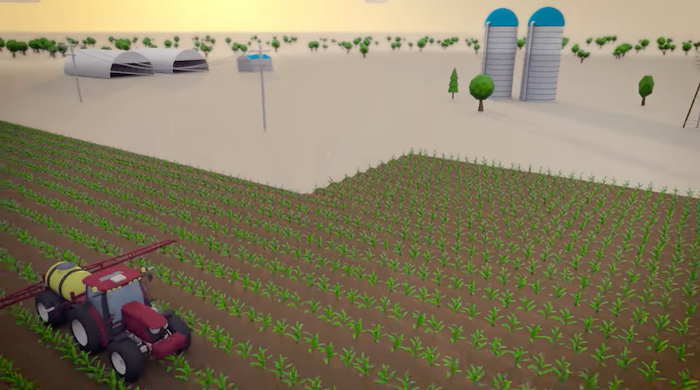A lot of people think of autonomy as immediately jumping to autonomous machines toiling all day, completely disconnected from the farmer. Really, there are two different levels of autonomy in use on precision farming operations today.
Level one automates some tasks and indicates to the operator where they can become more efficient. Using row guidance to make operators more accurate is an example of level one autonomy.
Level two continues automation of additional tasks and facilitates more coordination between systems in the cab and systems behind the hitched implements. It allows the system to become more accurate and take things over, while also allowing the operator to take on more of a supervisory role. Trimble is working at this level of autonomy. We’re focused on freeing the driver from monotonous and repetitive tasks like driving so they can instead move into that supervisor and safety role.
To be clear, we don’t want to take the farmer out of farming. The farmer is critical. We don’t want to lose all of their local expertise about particular environments. Autonomy simply takes their knowledge and enables them to do more. We’re giving them tools to be more efficient. If a farmer can spend more time looking at the work that’s being done behind the hitch and less time just steering the vehicle, they’ll perform better.
Autonomy benefits every operator, no matter their experience level. It enables operators with very little experience to run equipment at expert skill levels. It makes all users more precise and consistent, and puts less pressure on people to operate perfectly all the time.
We also want to give farmers feedback on how their operations are performing. By gathering precision data, a farmer can test things from one season to the next, and they can learn more about what works better in certain conditions.
Autonomy is not going to happen overnight. It will happen as an evolution. But as things become more automated, they also become more complicated. That’s why dealers will be critical in customers’ acceptance of autonomous farm equipment.
Some of the new technology will come via the OEM, but not all of it. The dealer network is going to be incredibly important to apply incremental autonomy solutions into the aftermarket. Piece by piece, dealers are going to need to be able to support the farmer and provide the farmer with training.
There’s a huge range of possibilities for the dealer network to get involved in enabling the farmer. Some of the big things are going to be giving an introduction to the technology and making sure everything works as expected — with the objective of helping to meet the farmer’s goals.
Whatever the level of involvement, a dealer’s guidance should come from a place of trust and understanding. The better dealers understand the technology, its benefits and how it addresses farmers’ needs, the more likely the farmers themselves are going to adopt it.
Kevin Andrews is Trimble’s strategic marketing manager for autonomy. Jeremy Leach is the director of autonomy for Trimble Agriculture.
Precision Farming Dealer’s series “Technically Speaking” is brought to you by Trimble Agriculture. This monthly article features insight, advice and observations from precision farming experts on a variety of trending and topical dealer-focused topics.




![[Technology Corner] Discussing AI’s Potential Impact on Service & Support](https://www.precisionfarmingdealer.com/ext/resources/2025/04/11/Discussing-AIs-Potential-Impact-on-Service--Support.png?height=290&t=1744385717&width=400)


